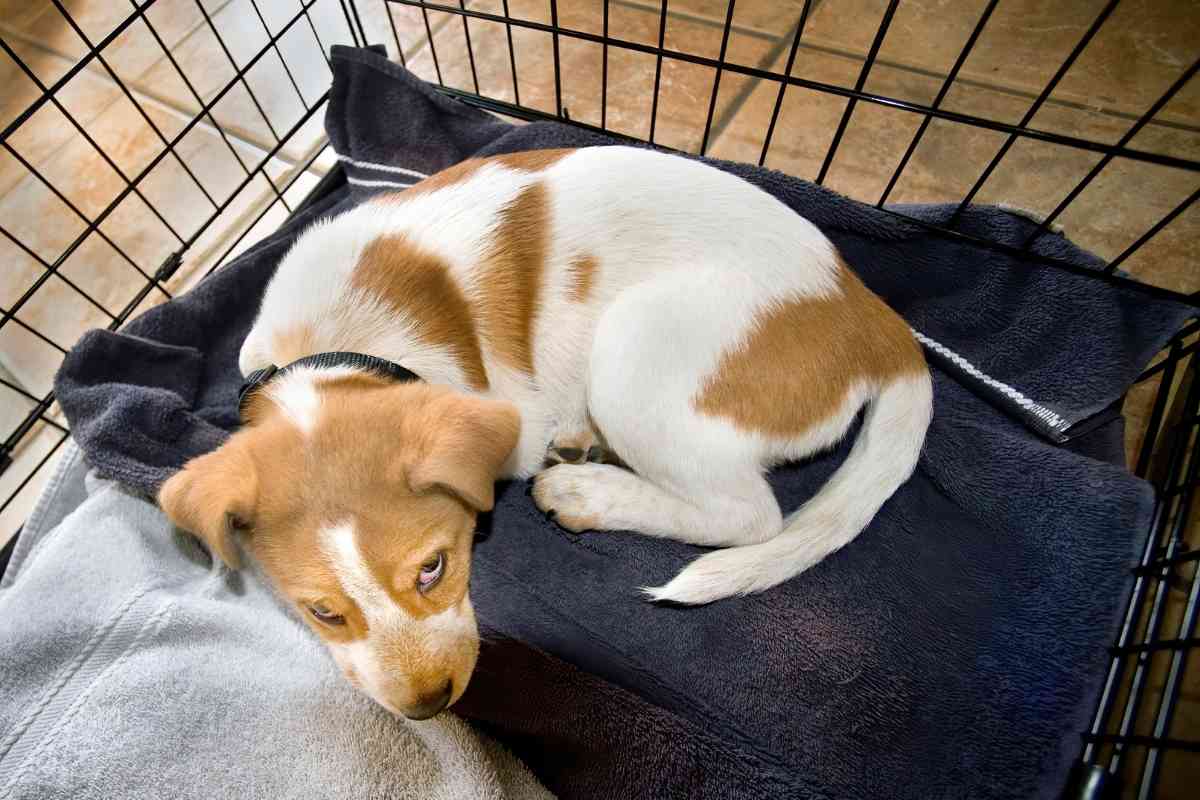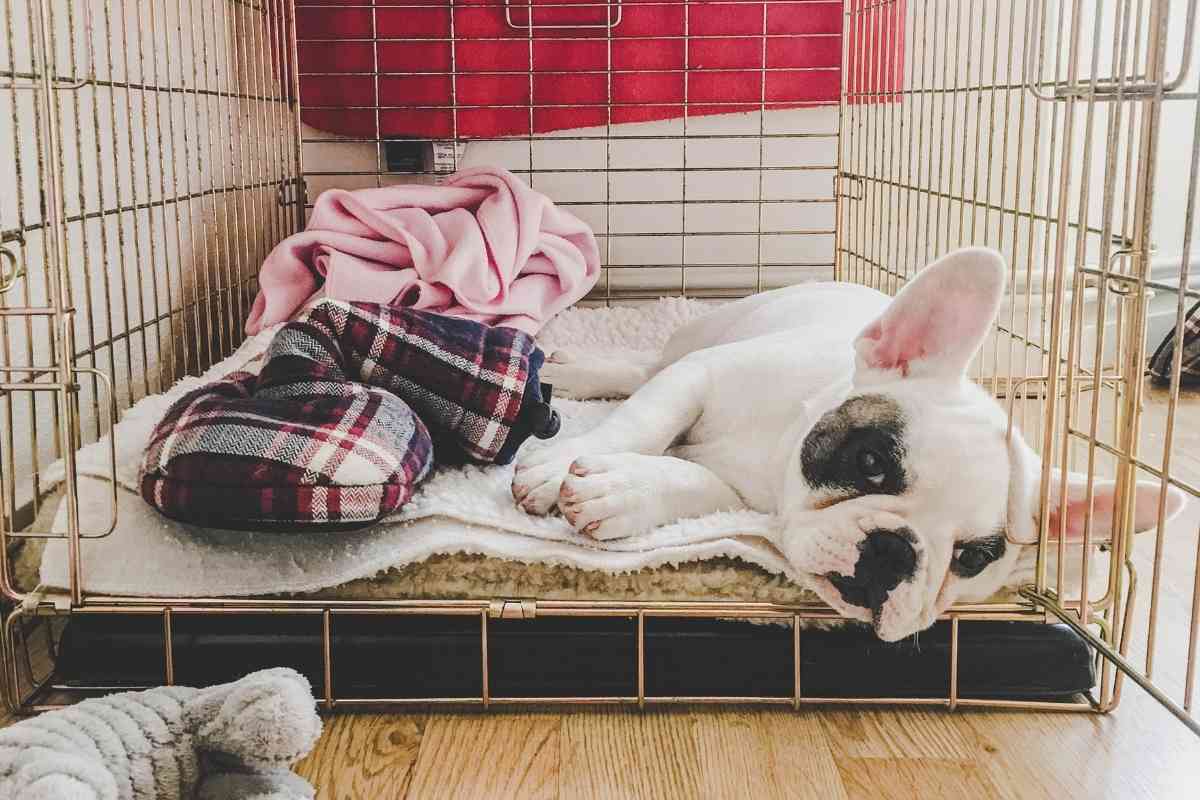Should You Close A Puppy In A Crate At Night?
As a dog parent, you know that crating your puppy has several advantages. But should you close a puppy crate at night? It works perfectly when dealing with stubborn dogs, potty training, or when on the move This is one question most pet parents with dogs ask. While crating works perfectly for different scenarios, is it advisable when you are going to sleep or at night? You last want to distress your dog by doing something that does not support it.

Should you crate a puppy overnight?
Puppies should be crated at night starting as early as 10 weeks old. Most people crate their dogs or puppies at night when training them. However, it is crucial not to distress your puppy since they will whine and cry out in response to the isolation.
Leaving the crate open at night only allows the dog to sneak out. If you are trying to train your puppy in a specific way, leaving the crate open defeats the purpose for which you were training it. Therefore, consider closing the puppy’s crate, especially at night, since you will not be awake to monitor it.
While leaving the kettle open during the day is not a big deal, close it at night. Several things could happen when you leave the crate open. Keep reading to discover what happens when you leave your dog’s crate open at night.
What is Puppy Crate Training at Night
It is one thing for your dog to eat and play in their crate and another for them to spend the night there.
While most crates often double up as playpens during the day, many dogs do not associate them with sleeping dens. Therefore, pet parents need to be extremely patient during this training phase.
It will eventually pay off. Crates are great since they help puppies get into a nighttime routine and also help to support them get quality sleep.
One of the greatest advantages of crate training your puppy is that they get used to a sleep pattern. You also benefit from regular sleep since the puppy will not be problematic to you. How you train the puppy when young determines how they grow as mature dogs.
Which Place Is Ideal to Put the Dog Crate at Night?
Once you are on the journey of crating your cat, you need to know where to place the crate. The location depends on several factors.
For one, you need to understand or observe whether the puppy is anxious when left alone in a different room. You also need to find out if the puppy becomes restless whenever they hear a movement near them. How your puppy behaves in these two scenarios determines the right location for them during the night.
The most important thing is to ensure that your puppy never feels isolated. They will certainly be more anxious in the first few days of crating because they are moving into a new space and forming new habits.
Therefore, as the pet parent, you need to be more understanding and accommodating, if not encouraging.
To increase security, consider putting a snuggle puppy inside the puppy’s crate. This will help the puppy feel safe and comfortable enough to stay inside the crate without too much whimpering. Also, put the crate close to your bed as it reassures and soothes them.
If you move a lot during the night, placing the crate in a quiet corner or an isolated room is advisable. You could also put some soothing music on to help muzzle the noises that could startle your puppy and cause them to wake up before time.
What To Do When the Puppy Whines Consistently?

You must first find out why your puppy is whining or barking if you are to resolve their issue effectively. This may mean monitoring the puppy’s activity at night. Install a camera, preferably one with motion or sound sensors, so you can be notified every time the puppy stir in their sleep.
This will help you identify the issue causing their discomfort. Consequently, you will effectively deal with it.
Distress Barking
You can always tell when your puppy is barking due to a certain level of distress. This should be your wake-up call to pay close attention to. However, there is no need to panic since such barking is expected.
Puppies are known to take a while to adjust to their new environments. Note that the puppy will be stressed when taken away from the litter and mother. You can always tell a distressed barking from your puppy because it exhibits extended whining, high-pitched howling, and non-stop barking.
Do not be intimidated by such behavior since this will not stop until the puppy is fully adjusted. Some puppies can even be seen pacing around, over-licking themselves and panting, while some may make attempts to escape.
In case this happens, try to soothe your puppy. Encourage and praise them when they behave calmly. However, it would be best if you were careful not to indulge them as this will break the training pattern.
You can also sit close to the crate as a show of security. Try your best not to remove the puppy from the crate whenever they bark too much, as this will train them to associate the action with being set free. You could easily place the crate close to your bed, giving the puppy a sense of security.
Demand Barking
Not all barkings are bad. Some could signal important needs, such as a potty break. However, your puppy is smart and can remember that you respond to their demand by barking.
If you are not careful, they may prompt you to let them out even when they do not require a potty break. You can control this by simply ensuring you practice routine potty break training. This way, your puppy will not associate the demand barking with being let out unless it is necessary.
In case your smart puppy continues to demand bark, there are a few ways you can respond to this.
Ignore the barking for a few minutes to see if they will settle down on their own
Sign your puppy’s quiet cue and acknowledge and praise them when they follow. You should then provide them with a toy or something that will keep them occupied in the crate.
Find out if they need a potty break for sure.
Check if the positioning of the crate needs to be changed or not.
Consistency is King
Crate training your puppy is no different from any other type of training. You need to be consistent if you are to yield any results. Your puppy may not be as stubborn as you think, only young and playful.
Let them know that you mean business by keeping at it. Over time, they get the message and comply. After all, puppies are pretty smart and quick learners.
Successful crate training is not easy. However, it is also not impossible. Make sure you are ready for the discomfort for a few days until your new puppy gets accustomed to the new environment and plan.
Above everything else, make sure you are patient during the process. Close the dog’s crate during the initial phases of training to ensure your puppy does not escape. Over time, they will become accustomed to the crate and cause little to no disturbance.